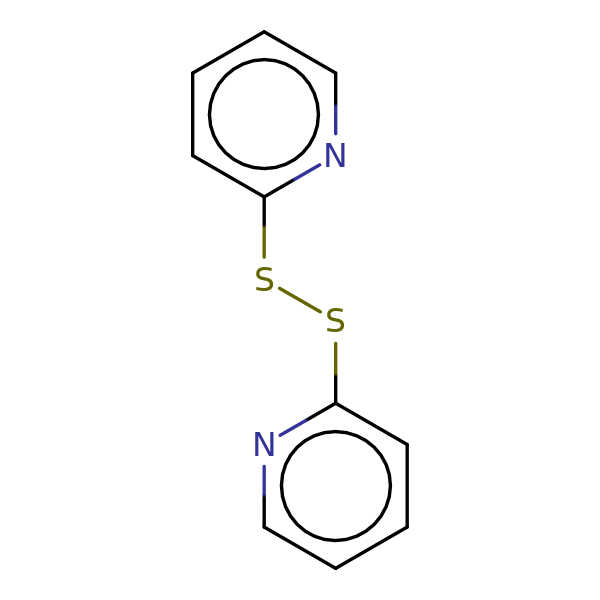
2,2′-Dithiodipyridine
CAS No. 2127-03-9
2,2′-Dithiodipyridine( —— )
Catalog No. M21726 CAS No. 2127-03-9
2,2'-Dipyridyl disulfide is a useful reagent for determination of sulfhydryl groups, preparation of amino acid active esters and the thio esters of phosphoric acid.
Purity : >98% (HPLC)
 COA
COA
 Datasheet
Datasheet
 HNMR
HNMR
 HPLC
HPLC
 MSDS
MSDS
 Handing Instructions
Handing Instructions
| Size | Price / USD | Stock | Quantity |
| 100MG | Get Quote | In Stock |


|
| 200MG | Get Quote | In Stock |


|
| 500MG | Get Quote | In Stock |


|
| 1G | Get Quote | In Stock |


|
Biological Information
-
Product Name2,2′-Dithiodipyridine
-
NoteResearch use only, not for human use.
-
Brief Description2,2'-Dipyridyl disulfide is a useful reagent for determination of sulfhydryl groups, preparation of amino acid active esters and the thio esters of phosphoric acid.
-
Description2,2'-Dipyridyl disulfide is a useful reagent for determination of sulfhydryl groups, preparation of amino acid active esters and the thio esters of phosphoric acid. It acts as a peptide coupling reagent and as an oxidizing agent. It is also used for the activation of glycosides.
-
In Vitro——
-
In Vivo——
-
Synonyms——
-
PathwayOthers
-
TargetOther Targets
-
Recptor——
-
Research Area——
-
Indication——
Chemical Information
-
CAS Number2127-03-9
-
Formula Weight220.31
-
Molecular FormulaC10H8N2S2
-
Purity>98% (HPLC)
-
SolubilityIn Vitro:?DMSO : 100 mg/mL (453.91 mM)
-
SMILESC1=CC=NC(=C1)SSC2=CC=CC=N2
-
Chemical Name——
Shipping & Storage Information
-
Storage(-20℃)
-
ShippingWith Ice Pack
-
Stability≥ 2 years
Reference
molnova catalog



related products
-
Aminopeptidase M
Aminopeptidase M (AMP) inhibition is of interest for several diseases, such as highly vascularized cancer types.
-
Cbz-NH-PEG1-CH2CH2CO...
Cbz-NH-PEG1-CH2CH2COOH is a PEG-based PROTAC linker that can be used in the synthesis of PROTACs.
-
5-(4-Chlorophenyl)-N...
5-(4-Chlorophenyl)-N-[[2-(2,2,2-trifluoroethoxy)pyridin-3-yl]methyl]pyridine-3-carboxamide is an inhibitor of human NaV1.8



 Cart
Cart
 sales@molnova.com
sales@molnova.com


